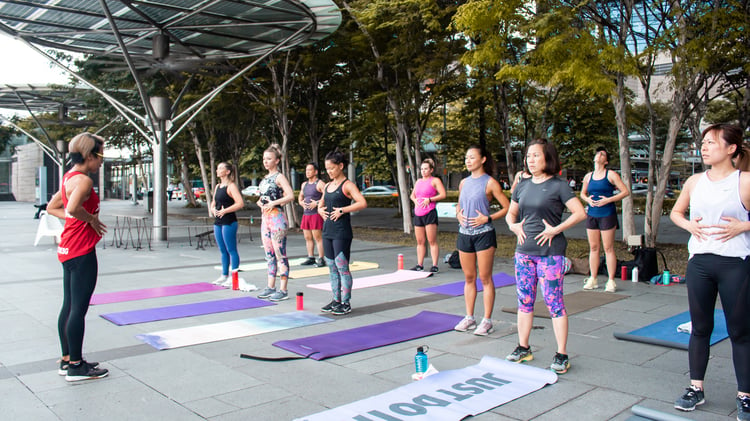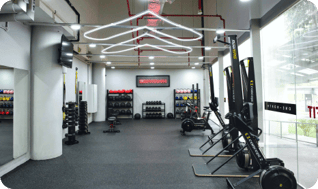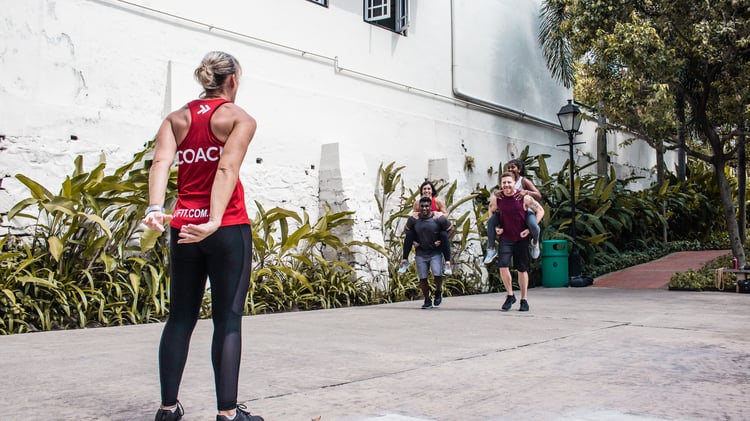A proper warm-up prepares you for the demands of your workout and reduces the risk of injuries
When it comes to warming up, what are we trying to accomplish? The name itself is a bit of a hint - but increasing body temperature is just one element. It might be easier if we rename the warm-up to’ training preparation’. Now if we ask what we’re trying to accomplish, it should be obvious - we’re preparing our bodies for the training to follow.
But is it necessary? Or how necessary is it?
 There's an ongoing discussion about warming up before the actual workout, as with so many other topics in physiology. A proper warm-up allows you to be more prepared for a session, and the better you would feel during and after the session!
There's an ongoing discussion about warming up before the actual workout, as with so many other topics in physiology. A proper warm-up allows you to be more prepared for a session, and the better you would feel during and after the session!
Why is Training Preparation Important?
We've seen an increased focus on mobility and proper warm-up protocols amongst trainers and athletes in the last ten years.
But the search for a "quick fix" is still ongoing, and in today’s society, everyone seems to strive to succeed both economically and personally. On the personal side, a strong, lean and healthy body range is high up on the list. But that requires a lot of time, or so it seems. And time is money. Lots of training concepts and adverts promise you an amazing body if only you spend money on it!
There simply are no short-cuts when it comes to achieving a strong, lean - and supple body. It takes some thinking, assessments, and planning to progress towards this goal.
So skipping the "warm-up" to save time is not a good idea. You would end up losing in the long run. To rush the warm-up so you´d actually need to warm up before your warm-up is not very wise either.
You get the point - skipping the warm-up is taking shortcuts, and shortcuts will not give you optimal results.
So let’s look at some ways to prepare the body for the training session ahead.
For coaches, they have two main priorities - to help you make the most out of your time spent on training - in the safest way possible. The fun part comes as a bonus!
Remember, safety first! This is mainly about injury prevention through training preparation and good form.
But there is so much more to training preparation. It´s also vital for a good overall experience. Like a good movie, it should have a beginning - the main part and an end. Without one or the other, the movie experience wouldn’t be the same, right? The popcorn only goes so far...
How to Ramp up your Warm-Up in an Adequate Way
There are tons of mobility drills and training preparation exercises, and there´s not a single answer to what good preparation is.
An ideal warm-up protocol depends on the goal of the training session. There are different preparation methods depending on what kind of session you are ramping up for.
However, the first part of the session should involve drills that get your blood circulation going and that fire up your Central Nervous System (CNS). The second part should prepare your body to work in a full range of motion. The third part should activate your main muscles to make sure they´re fired up properly before going into specific movements. The fourth part depends on the activity and the main goal of the session.
Is the session ahead of a pure strength session? A running session? A HIIT session? Or a mix of all these; a so-called Metcon session? Is it a performance/skill session?
To put it very simply, if your main goal with a session is to hit personal records on deadlifts, you don’t have to spend 10 minutes on running drills. Not that it will hurt in any way to do it, rather the opposite, but there are better ways to prep your body for a 1RM lift.
This general protocol is a-so called RAMP protocol. Now you get why we say 'RAMP UP' before your session!
- R for Raising body temperature and heart rate to increase core temperature and local tissue blood flow
- A for Activating key muscle groups and neuro-muscular coordination and stabilization
- M for Mobilising joints and stimulate joint lubrication
- P for Prime the body for maximal intensities that the following session will require.
Some Popular Warm-up Protocols
Prior to HIIT and strength sessions, the following mobility protocols are great:
- Wrists (wrist circles, stretch)
- Elbows (elbow circles, elbow punch)
- Shoulders/upper back (dislocations, arm circles, over and backs (swing the arms up over your shoulders and chop your upper back, then swing the arms back down behind you) and bear hug swings (swing your arms out to the sides, then back across your body like you’re hugging yourself) are quick and easy.
A stretch we call the pat-down is also great: get near a wall and put your hands against it overhead like you’re getting searched by an arresting officer. Keeping the abs tight to prevent hyperextension of the back, push your chest down and back from the wall to open the shoulders. Instead of just pushing, thinking of pulling down away from the hands as well. No equipment is needed.
- Spine/trunk (standing trunk rotations, scorpion)
- Hip flexors/quads (leg swings, lunge variation with rotations, running drills)
- Hip extensors/adductors (bow and bend, Spiderman lunge, groiners which are like mountain climbers that reach the feet up to the hands and put you in the Spiderman lunge position. Walking leg cradles (knee to chest), side leg swings, walkouts (inchworm), the Kossack, the Russian baby maker,
- Knees (knee rotations, squats)
- Ankles/calves (heel-toe walking, ankle circles)
Key Factors to take note of
- Keep it dynamic
- Movement through all three planes, sagittal, frontal, transverse
- Compound movements (the perfect stretch)
- Primal movements (crab walks, frog jumps, duck walks, bear crawls, inchworms)
- Unilateral movements
- Full body dynamic ROM (range of motion) on all joints
- Shoulder mobility
- Mobilization of thoracic spine and hips
- Activations of glutes (the body´s powerhouse)
- Core stabilization and organization (spinal mechanics)
- Prime the central nervous system
- Co-ordination (concentration and good form)
By no means do you have to follow these exact protocols, but this gives a good indication that a proper warm-up is more than a few jumping jacks, knee tucks, and push-ups.
And again - there are no shortcuts that will help you reach your goal.
Only hard, smart work will. So next time, think your sessions through. You'll get so much more out of them. Or even better - keep coming to our sessions, we've thought them through for you!


.png?width=301&height=187&name=Website%20Navigation%20Images%20(3).png)

-1.jpg?width=1984&height=1196&name=UFIT%20Club%20Street%20Front%20(4)-1.jpg)







.jpg?width=750&name=DSCF4614%20(1).jpg)
